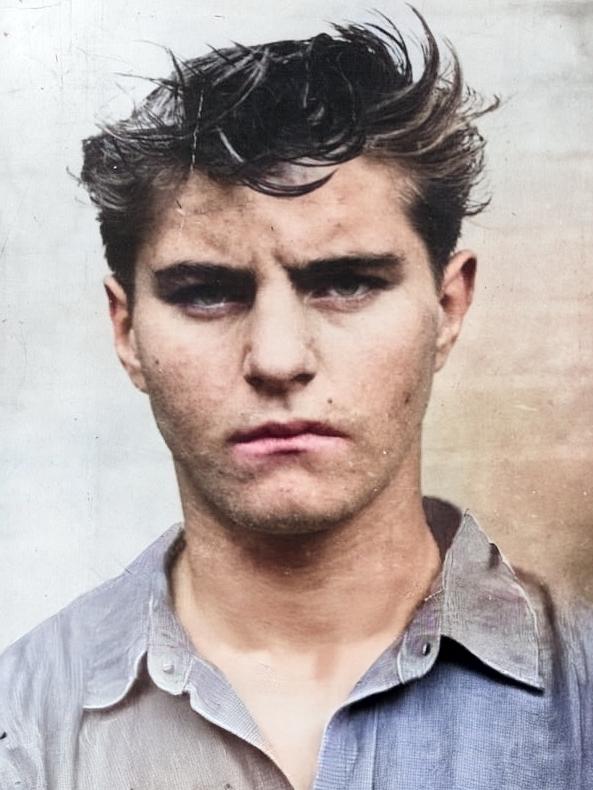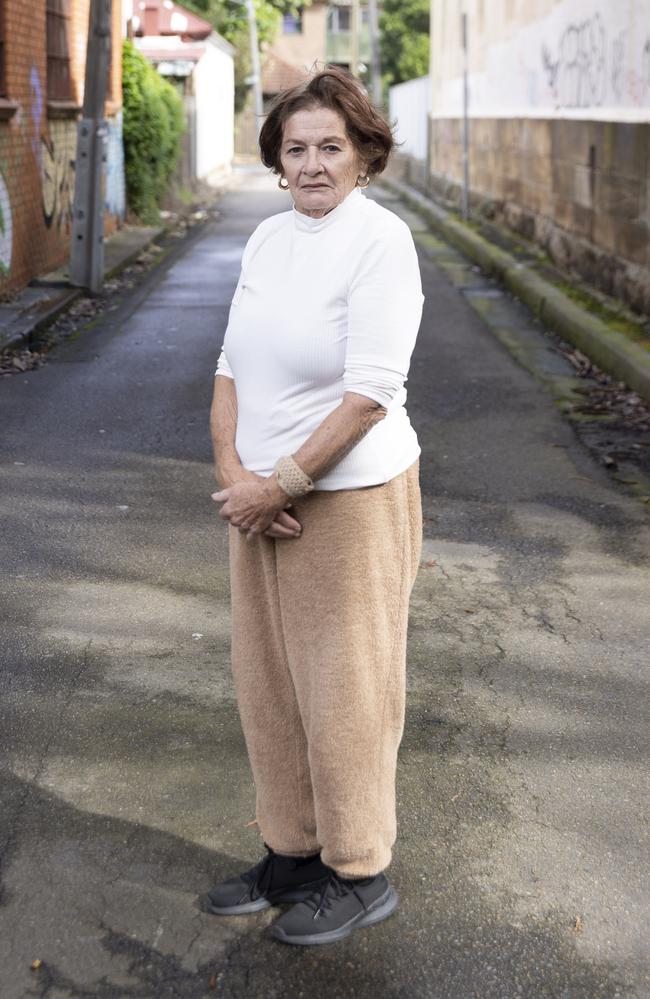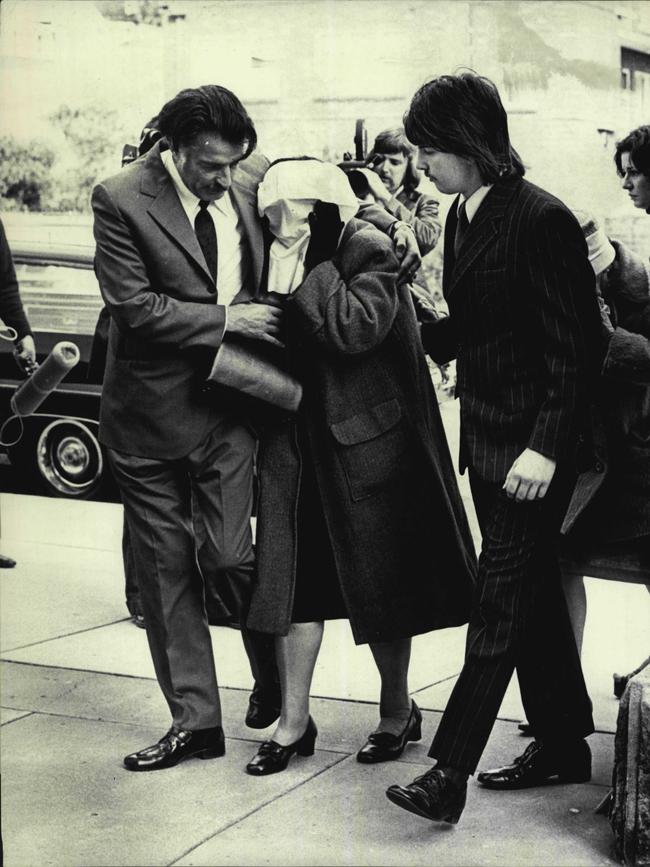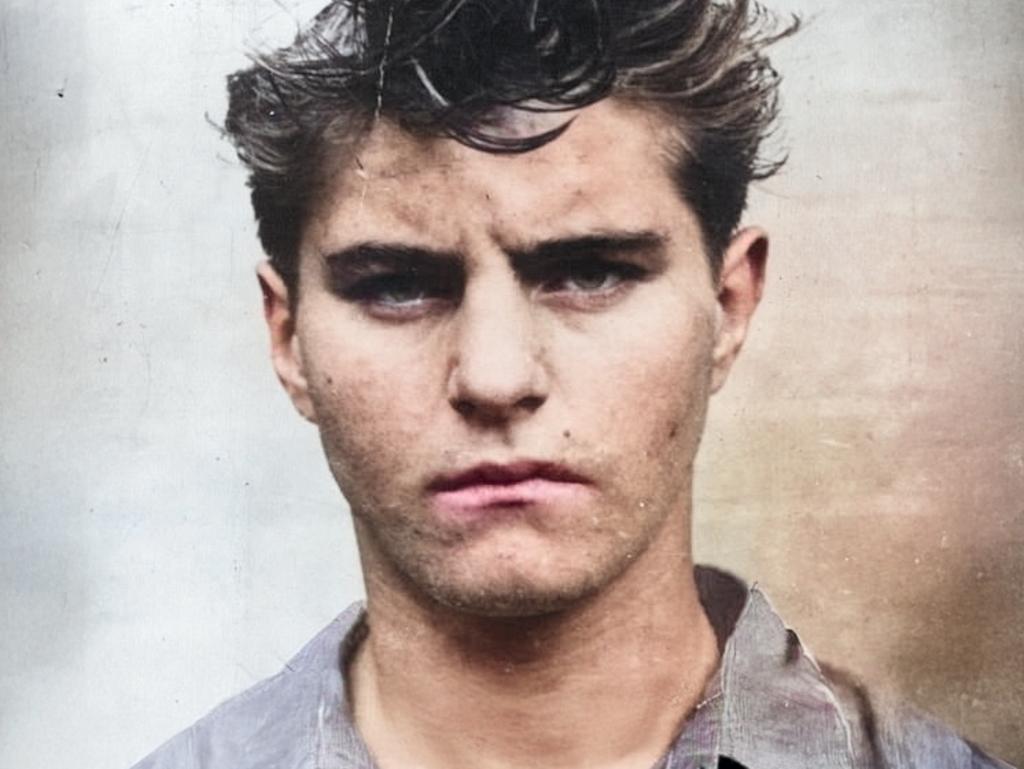Mystery of The Magician: ‘I never killed him. But I had been set free’
When a gang of killers dispatched 29-year-old Johnny Regan with .38 calibre handguns, they did something else they might not have been aware of. They flicked the latch on Margaret Yates’ domestic prison.

On Monday, September 23, 1974, Margaret Yates, then 27 and a mother of three, woke up in an apartment in inner Sydney, went to the bathroom and cut off her long, dark locks.
The night before, Marg had learned that her de facto husband of more than a decade – gangster Stewart John Regan – had been gunned down by three, possibly four, shooters in a side street in Marrickville in the city’s inner-southwest.


Regan had been hit in the back, the vertebrae and other vital organs. A decisive headshot at point-blank range was delivered. He was just 29. His murder remains an active cold case.
Marg’s decision to shear off her hair came as an automatic response to Regan’s violent death. Of course she mourned her Johnny. Her children, John Paul, Helen and Clare, had instantly lost their father.
The killers who had set the trap for Regan and dispatched him with .38 calibre handguns had done something else they might not have been aware of. Yes, they had rid the streets of the dangerous, many say psychopathic, Regan. (He supposedly was loathed and feared by police and criminals alike and, according to myth, prisoners at Sydney’s Long Bay jail erupted in applause on the news of his death.)
But they also had flicked the latch on Marg’s domestic prison, held for years as she had been by a controlling and violent partner.
There were good times. He was affectionate to his children. He worshipped his mother.
Then there was the other Johnny Regan, the former country boy with the shortest fuse in the underworld. He wore a bulletproof vest for a reason.
“They asked me, did I kill him?” Marg, 78, told The Weekend Australian. “I never killed him. But I had been set free.”
By cutting her hair she also had liberated herself from an increasingly dark and unsettling present and perhaps had been given the gift of a stable future for herself and her kids.
“I was always told I wasn’t allowed to do things – don’t cut your hair, don’t drink, don’t smoke, don’t do anything,” Marg said, speaking on his death and her past for the first time in 50 years as part of The Australian’s new investigative podcast The Gangster’s Ghost. “My youngest daughter, Clare, used to say to me: ‘How’d you feel when Dad died?’ I’ll be honest with you, it was a relief because I know the life that I would have lived with him into the future.
“I wouldn’t have had a life. My girls wouldn’t have had a life. My girls would’ve never gone to a good school, be educated. I know that. That’s how it became.

“You don’t walk away from people like that. You don’t walk away. Even though he was my childhood sweetheart, he wasn’t the same person that I met back then. This is where the problem is today in domestic violence.
“People go – oh, why did she stay? That’s quite easy to say. But it’s not easy to walk away from these people that will follow you to the end of the world.”
Regan was no garden-variety member of the Sydney underworld during the 1960s and 70s.
He was born and reared in rural Young on the southwestern slopes of NSW and his mother, Clare, left her husband, Alf, and brought her only child to Sydney in the late 1950s. He was a quiet and well-liked boy in Young, the cherry capital of Australia.

However, his mother, known to the family simply as The Colonel, was ruthless and cruel. She took to Johnny with a stockwhip. She encouraged violence as a way of solving life’s problems.
Then when he hit the big smoke of Sydney he turned rogue.
Regan was incarcerated in the notorious Mount Penang home for boys in Gosford on the NSW central coast – a virtual training school for some of the country’s worst criminals – before being let loose on the streets of Sydney’s Kings Cross in the early 60s. He was a pimp, thug and standover man while he was still a teenager. Although he was never charged with murder, it was suggested in the underworld that he had notched up his first kill – nightclub bouncer Barry Flock, shot to death in Sydney in January 1967 – when he was only 21.
On Regan’s death the press speculated that he might have killed up to 12 people, including a small child. He was known as the Magician – the man who could make people disappear.
‘I’m going to marry you’
It was while Regan was working as a bouncer at the Whisky a Go Go nightclub in William Street, Kings Cross, that he first met Marg. It was 1964. She was an innocent young woman from suburban Arncliffe in Sydney’s south on one of her first nocturnal outings into the city. She went to the Whisky with a girlfriend. Before long, the bouncer was circling her.
“He was a very strong-looking man, sort of stubby, but he had a strong build,” Marg recalls. “He had beautiful eyes. He was a very good-looking man.
“After about half an hour to an hour later, he came over again and because he’d been working late I don’t think he was supposed to be talking the patrons and dancing on the floor. Can’t believe when I think about it now.”
Regan was smitten.
“So he comes up to me and he leans over and he says to me – ‘I’m going to marry you’,” Marg says.
“I didn’t know who he was. And he asked me for my phone number. I didn’t give it to him, but my friend gave him my phone number. He rang and he said: ‘I want to see you again.’ And that’s how it all started.”
Regan, she says, was fun to be with. A prankster. He was intelligent and had a winning personality. He was, however, leading a double life.
While courting, they enjoyed each other’s company, sometimes swimming at Bondi Beach. Simultaneously, he was exploring the underside of life in inner Sydney, extorting money, pimping for sex workers and earning a quid any way he could. His violence escalated. Marg was kept oblivious. When he turned 21 – celebrated with a small birthday party at the fabled Chequers nightclub in Goulburn Street – Marg noticed a profound shift in his personality. One of the guests at that party was criminal Frederick “Paddles” Anderson, then considered the “boss of bosses” in the Sydney underworld.

What was Anderson doing there with Regan and his family? Was his presence a green light for Regan to engage in top-level criminal activity? Had Regan become one of the master’s apprentices? Marg saw an almost instant change in her partner.
“There’s a difference between power and greed and selfishness, and it’s a terrible thing to hurt someone, to hurt anybody,” she reflects. “That is just not what normal life is about.
“I didn’t know I was going out with a so-called monster. Most of it was kept secret from me. Like, of course, once I went to (gangster) Lennie McPherson’s house and Stan Smith’s house and things like that, I was quite aware of who they were. I was at that age where I knew who they were. But I could honestly say that nothing happened there.”
Marg says Regan saw Anderson as a father figure.
“He looked up to him because he was an older man,” she says. “He kept popping up. (Johnny) was lured by this man into this world.”
From about 1966 Regan’s violence demonstrably increased, both on the home front and on the streets. His police records reflect numerous charges for assault. He was involved in a wild west-style shootout with two other criminals in Oxford Street, Paddington, and was wounded.
In early 1967 he was a suspect in the murder of Flock but was never charged. In the end Regan would be accused of up to 12 murders, including little Karlos Anastassi Scott-Huie, 3, the son of one of Regan’s occasional girlfriends Helen Scott-Huie, in May 1974.
Brothel madam and whistleblower Shirley Brifman, who herself died in suspicious circumstances in March 1973 and was at one point pursued by the Magician, said as a gangster Regan wanted to “take over Australia”.
In the end, he had become an uncontrollable nuisance to police and the criminal underworld alike. He had his fingers in dozens of pies. He intruded on other gangsters’ turf. He got too big for his boots.
He also physically assaulted Marg.
“He had a good personality when it was good, but if he was angry and things like that … he hit me, beat me,” she says. “He said: ‘You’re not listening to me. You’re not listening to me. I want you to do this.’ I can’t remember what it was about … and he struck me.
“I ended up in St Vincent’s Hospital. And I’d have him at my bed begging me for forgiveness. And I also had a policeman come and say: ‘You charge him now. I know who did this to you.’ I said: ‘I don’t know what you’re talking about.’ That was my life.
“You can’t walk away from people like this … he wasn’t that person when I met him. He wasn’t. He became that person. Power and money does a lot of things to change people’s lives.”
Gangster’s Ghost podcast
The Gangster’s Ghost podcast sheds new light on Regan and dispels some of the myths about him that have been recycled for more than 50 years. It examines his childhood in Young and the impact of his violent and abusive mother.
Incredibly, the podcast also features the voice of Regan from beyond the grave. Formerly lost recordings he made of his phone conversations in the years before his death have been remastered with the help of artificial intelligence and brought Regan to life after a half-century.

The podcast exposes Regan’s involvement in a vast scam involving the sale of vacant, often uninhabitable blocks of land throughout rural Australia, mostly to new migrants. Critically, it links Regan to the Whiskey Au Go Go nightclub firebombing in Brisbane in 1973 that killed 15 innocent people. For decades his involvement in that mass murder has been covered up.
Finally, it takes a forensic look at Regan’s last day – Sunday, September 22, 1974 – and his brutal assassination in Chapel Street, Marrickville. Who killed Regan? Was it fellow criminals or corrupt police, or a combination of both? Why were crucial witnesses excluded from the coronial inquest into his death in 1977? Why are important documents still missing?
Most significantly, did he kill little Karlos Scott-Huie? It’s an accusation that has stuck with Regan, and by proxy his family, for 50 years. The podcast, however, establishes a new theory about that crime and how it foreshadowed Regan’s ultimate murder.
Helen Regan, the oldest daughter of Marg and Johnny, was with her father for most of that final day and has eerily accurate memories despite having been just three years old at the time.
She has gone on to have an extraordinarily successful career in the hospitality industry and credits the father she never knew with her tenacity and confidence, understanding fully “he was no choirboy”.

But what she knows only too well – and what the podcast also explores – is that Regan’s explosive life and death continue to have an impact on the family. The ripples continue to flow outward.
“This whole thing about my father … has had an adverse effect on generations of people in my family, and our lives have been tough, you know?” Helen says. “Our lives could have been easier. But we were robbed.
“What they did by killing my father meant my mum had to struggle … she was just 27 with three kids and these people who were supposed to be his friends – where were they helping her after he died? No one helped. Where are all these great people who were my father’s associates that could help her put food on the table or give her a house to live in or give her one of his many houses he was supposed to have owned? I mean, where’s all these houses?”
In life, Regan was named in the newspapers as the “millionaire gangster”, and his property portfolio, outside the land scams, was supposedly substantial. But all of Regan’s assets and rumoured “barrels of cash” evaporated on his death. So, too, much of the truth about Regan’s life and death.
“I want answers for my mum,” Helen says. “This has had an adverse effect for years and years on my family. Mum’s got great-grandkids now. I think it’s only fair that we get some answers after all this time.”
Subscribers to The Australian and registered users hear episodes of The Gangster’s Ghost first at gangstersghost.com.au.



To join the conversation, please log in. Don't have an account? Register
Join the conversation, you are commenting as Logout